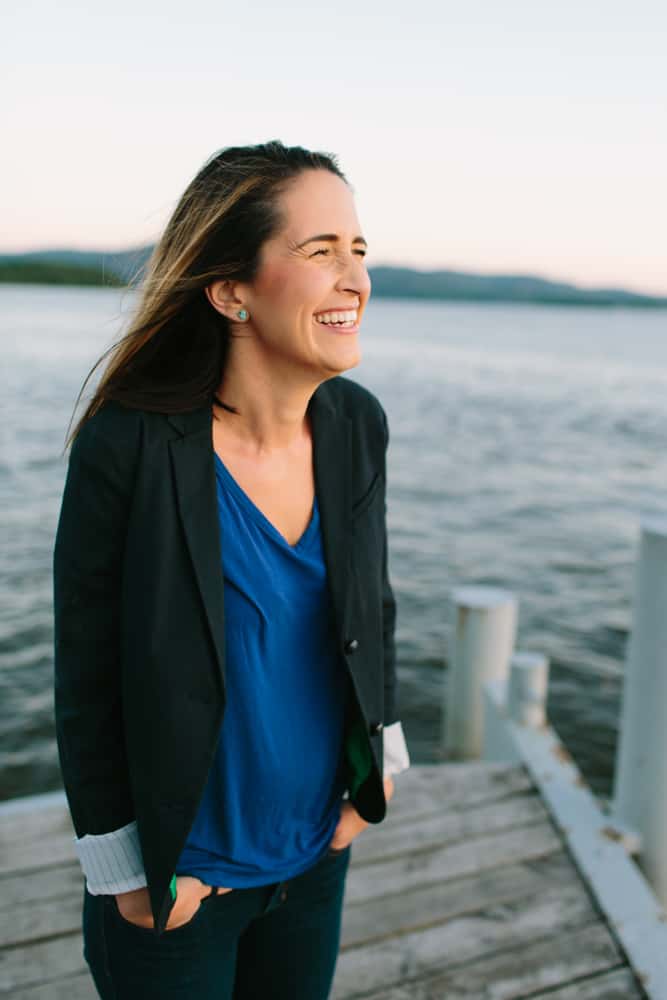Jennifer Bernstein is a lecturer with the University of Southern California’s Spatial Sciences Institute, and an author, guest editor, and editorial board member of UC Press’s journal Case Studies in the Environment.
UC Press: Thank you for being a part of Case Studies in the Environment!

Jennifer Bernstein: Thank you so much for having me on the team! I first learned about the journal via the Association for Environmental Studies and Sciences (AESS) listserv when it was just an idea, and I was so excited about the concept. At the time I was teaching geography at Santa Barbara City College and was searching for high-quality case studies designed specifically for educators and their students. The concept that the manuscripts would illustrate a larger principle, and also be relatively short and accompanied with educational materials, immediately appealed to me.
UC Press: You’re a member of the faculty at USC’s Spatial Sciences Institute. What are some of the ways that “spatial thinking” can help us better understand and pose solutions to vexing environmental problems?
Jennifer Bernstein: Spatial science cuts across disciplines, which is critically important because environmental problems are inherently interdisciplinary. We do things like monitoring sea-level rise, identifying biodiversity loss, understanding vegetation changes, siting alternative energy facilities, spotting at-risk ecosystems… the list goes on. By gathering information on where something is and how it’s changing, decisionmakers can prioritize funding, develop policy, and show the public how humans impact the non-human world. Spatial science takes data and turns it into action.
UC Press: Along with Karen Kemp, you’re guest editing a special issue of Case Studies in the Environment called Case Studies from the Spatial Sciences, and the first articles in that collection have now been published. What can you tell us about the process of working on that collection? And what are some of the highlights from the issue?
Jennifer Bernstein: Well, this was a great opportunity for all of us at the Spatial Sciences Institute and we truly appreciate the CSE team for being amenable to the concept. Karen and I knew of many educators wanting to use spatial science in their classes to facilitate environmental problem solving, and since we work with so many people doing great work in that space we saw it as a logical match (and lucky for us, the editors agreed). Robert Vos wrote about the global environmental impact of blue jeans, using spatially-explicit Life Cycle Analysis. Andrew Marx and Donald McFarlane showed how remote sensing can improve the quality and lower the cost of monitoring vegetation migration due to climate change. An-Min Wu and Jill Johnson reported their findings on lead contamination in LA county. Recently-graduated Masters student Anthony Mosinzki wrote about his work on siting wind farms to reduce negative impacts on wildlife while James Luttrell and Steven Fleming examined the broader impacts of the creation of artificial islands in the South China Sea. Some articles are still under review. But as a collection, the articles are united by their use of spatial analysis to monitor environmental change and ultimately can help inform the next generation of environmental decision-makers.
UC Press: Case Studies in the Environment has now published several thematic collections of case study articles, including Parks and Conservation and Water Science and Collaboration, and Section Editor Tuyeni Mwampamba (Ecology and Biodiversity Conservation) has recently issued a call for papers for a new special issue on incorporating plural valuation of nature into environmental decision-making in the Global South. You’re also giving a panel, along with Section Editor Dustin Mulvaney (Energy and the Environment) at the upcoming American Association of Geographers annual meeting that is dedicated to organizing, submitting and publishing special issues in Case Studies in the Environment [UPDATE: The AAG meeting is now virtual! Registration for the meeting available here.] While the in-person AAG meeting is cancelled, a virtual panel is in the works, details to come soon!]. What advice would you give to potential guest editors who might be reading this piece?
Jennifer Bernstein: First, thanks for the Association of American Geographers plug! We hope the panel is a casual information session from section editors, guest editors, and authors. If you are reading this and planning on attending, come check us out!
Thematic collections are great, especially when the participants are aware of one another’s work and actively engage in dialogue. As editors, Karen and my job was to define the scope of the CFP and make sure that there was a common thread uniting all the submissions. We decided that we wanted our issue to focus less on the technical, because that part is relatively simple to fill in. Instead, we wanted to provide a “grand tour” for our target audience, namely faculty and students who were interested in how spatial analysis could be used as an environmental problem-solving tool. We hope this collection demonstrates to readers how methodologies from the spatial sciences are a great fit for addressing multidisciplinary and inherently “wicked” environmental problems. I’d also like to mention how smooth it was working with everyone at UC Press through the editorial process.
Case Studies in the Environment is a journal of peer-reviewed case study articles and case study pedagogy articles published by University of California Press. The journal informs faculty, students, researchers, educators, professionals, and policymakers on case studies and best practices in the environmental sciences and studies.
cse.ucpress.edu